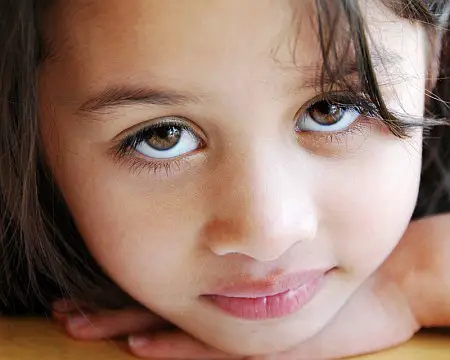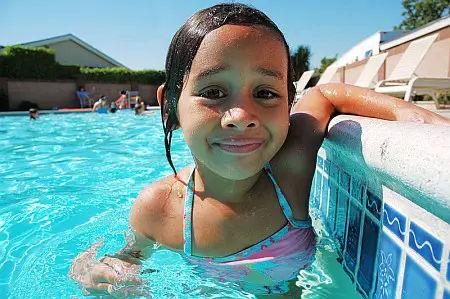I love making portraits. People, especially faces, to me, are a fascinating subject. So expressive and varied—there is emotion and character and life in every subject.
First, what is a portrait? The extremely open-minded among us will argue that any photo can be a portrait—face not required. A hand, a wisp of clothing, a musical instrument. To each his own. For me, a portrait is a photo that would allow me to recognize the person depicted if I met them on the street. A face is an essential ingredient.
But beyond that, the possibilities are limitless. Do you include the environment and the subject’s body? Just head and shoulders? Profile? Tight closeup? There is no wrong way to make a portrait. But the goal in portraiture should be more than just reproduction of a person’s features. We’re not making mug shots or identification badges after all. Ultimately you want to make a photograph that makes a connection with the viewer.

Those eyes. 1/8s (with vibration reduction) @ f/5.3
I find that the best place to start is with the eyes. It’s natural to meet someone’s gaze even when reproduced on a 2-dimensional medium like a computer screen or film. The eyes can draw the viewer in, acting as a focal point for the entire image. This is why it is usually critical that the eyes are in focus. I can’t recall seeing a portrait that I really liked where the eyes were not in focus. And this applies whether you are taking photos of people, pets, or animals in the wild—focus on the eyes.
One great way to make portraits is to include some of the surroundings. Including the environment can tell a story about the subject, letting you know something about him, perhaps something he enjoys doing. A person outdoors by a campfire tells a completely different story than the same person in an office building. The environment can also be used just to set a mood, maybe to add some color or emotional texture to a portrait. A back alley. An elegantly appointed room.

Swimming. 1/500s @ f/8
Portraits sometimes even include more than one person. Couples, families, friends. Showing the connection between two or more people in an interesting way is both challenging and rewarding. The portrait below is not only a group portrait, it is a candid one. We were setting up for a posed family portrait and I shot these while I was adjusting my lighting setup. Candids are a great way to catch some genuine emotion.

Candid group portrait. 1/500s @ f/3.5
Some tips:
- Focus on the eyes.
- It’s okay to chop off body parts when framing. Just remember you still need to end up with balanced compositions whether you are doing a tight closeup or a group shot.
- That said, try not to cut off hands, feet, or limbs. Seeing an entire body with just a foot cut off can give an awkward feeling (like my candid, above).
- Try to add a little sparkle to the eyes. Using a flash or positioning your subjects strategically in relation to your light source to create a catchlight in their eyes adds a nice, warm touch to a portrait.
- When including the environment, take care to position your subject so that the background doesn’t distract. Avoid having utility poles and trees growing out of your subject’s head.
- Try candids. Catching people when they are doing something else is a great way to capture people when they are most relaxed and genuine.









0 comments